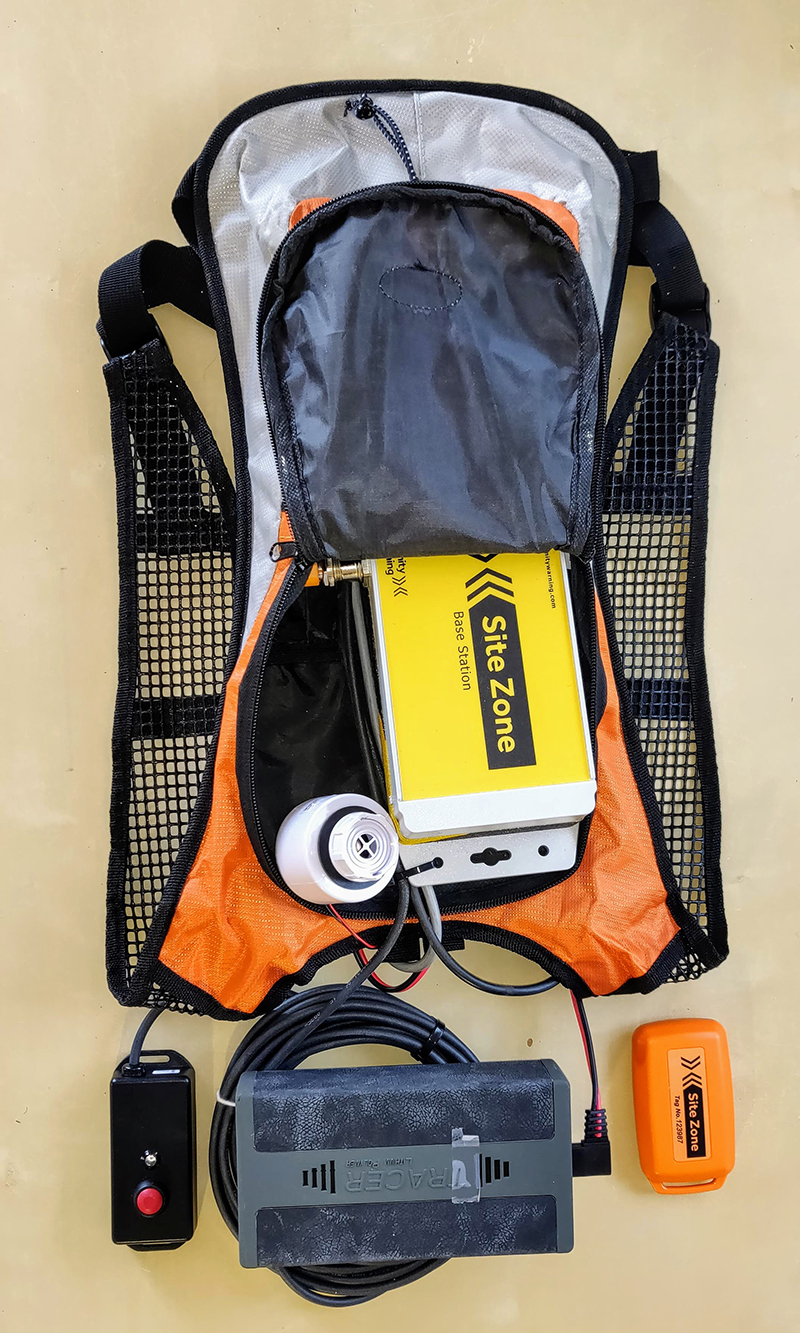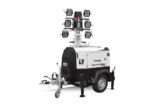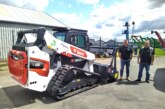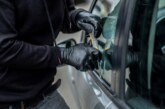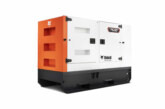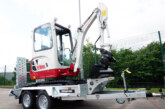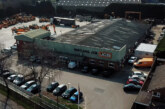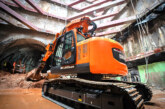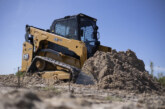
SiteZone Safety donated social distancing devices to protect construction workers building NHS Nightingale, Birmingham.
On 20th April SiteZone Safety donated six of its personnel distancing systems (PDS) to key construction staff on site at NHS Nightingale, Birmingham. The aim is to use them to train and encourage workers to maintain safe social distancing while they transform the NEC into a vital COVID-19 treatment hospital to service the Midlands.
The PDS consists of a small 2kg pack, and a detection ‘tag’ which can be worn on the safety hat, attached to a belt or upper arm. The system has 100 hours of rechargeable battery life.
The ‘trigger’ point, or “exclusion zone” can be configured to suit the site’s needs, and the unit is easy to charge.
The proximity alarms are triggered if workers get too close to each other, when both their wearable tags will vibrate and the PDS alarms.
Gary Escott, co-founder of SiteZone Safety, was approached by Interserve Construction, the principal contractor converting the Birmingham NEC two weeks prior. Following discussions with Stuart Palmer, Interserve (Site Manager), and Ross Hunter (Health & Safety Manager from West Midlands Building), it was then decided that urgent training was needed to enforce the 2m on site between workers.
Two on site Safety Ambassadors wear the PDS units full time and patrol the site to ensure workers are observing the 2m rule. If not, they are reminded, with accompanying demonstrations using the PDS. The four remaining units are being rotated between different key tradespeople on site to reinforce the 2m rule. In this way, it is intended to raise spatial awareness and affect behavioural change on site.
Rapid development and deployment
Following the initial conversation with Interserve, SiteZone Safety made their first prototypes in 24 hours. They were demonstrated to the client within 48 hours and were being tested on site at the NEC 96 hours later.
Stuart Palmer, Site Manager at NHS Nightingale says, “It was vital that we kept our construction staff protected from infection risk and encouraged them to work around each other safely. We knew about SiteZone Safety’s proximity warning expertise, and they have been able to meet the challenge for us in record time. There was an urgent need to get NHS Nightingale, Birmingham, completed, so high standards of health and safety practice were key drivers to the success of this project. SiteZone Safety’s PDS solution helped us achieve both.”
There were specific challenges when developing the PDS, including making it lightweight, easy to use, and efficiently powered to function for long periods of time. An ultra-light pack seemed like a sensible solution for quick deployment, therefore this is the method that has been used at the NEC.
These are the first systems of this type that SiteZone Safety has ever produced; the PDS repurposes the original SiteZone proximity warning system, which prevents collisions between personnel and mobile plant and vehicles. This time, other people are the threat, and the exclusion zone is rigid.
Gary Escott, co-founder of SiteZone Safety says: “We had an unusually short period of time to develop and produce a solution that we could deploy quickly. The biggest single advantage we have is that our PDS is built on proven technology, with over 125 million hours in use. The technology has been repurposed for this new application i.e. an invisible virus is now the risk, not a moving vehicle or machine.”
The PDS will be used for the duration of construction at the NEC – approximately four weeks. NHS Nightingale NEC has been provided with their PDS units free of charge as part of SiteZone Safety’s and their hire partner, ESS-Safeforce’s appreciation of the work that Interserve and the NHS are doing in response to the COVID-19 outbreak.
Looking forward
In other industries during the COVID-19 crisis, SiteZone Safety anticipates the social distancing requirement to be necessary for potentially 3-6 months. The PDS will be offered on a hire basis by working with SiteZone Safety’s hire partners, ESS-Safeforce, and can be re-purposed for clients’ vehicles for plant/personnel interface after the crisis is over. Mick Jones, Managing Director at ESS-Safeforce says, “Social distancing is a priority during the COVID-19 crisis and the hire model increases accessibility of the SiteZone PDS to a wide variety of users, who we are pleased to serve in this time of urgent need.”
The behavioural aspect is the most important element of this safety protocol. The aim is to spur discussion of social distancing on site, raising awareness of distance and learning to practice it more easily, even as second nature. This is how workers can operate on site and manage the health risk presented by coronavirus.
Gary Escott, co-founder of SiteZone Safety says, “The COVID-19 crisis presents us with work-related risks that we’ve never dealt with before. Innovation and co-operation have become vital in the current battle to mitigate coronavirus’ occupational health risk. Our technology was designed to be flexible to meet a variety of client needs; now it can be used to enforce the 2m rule, change behaviours and keep workers safe. COVID-19 has taught us more than ever, that we must adapt to survive.”
